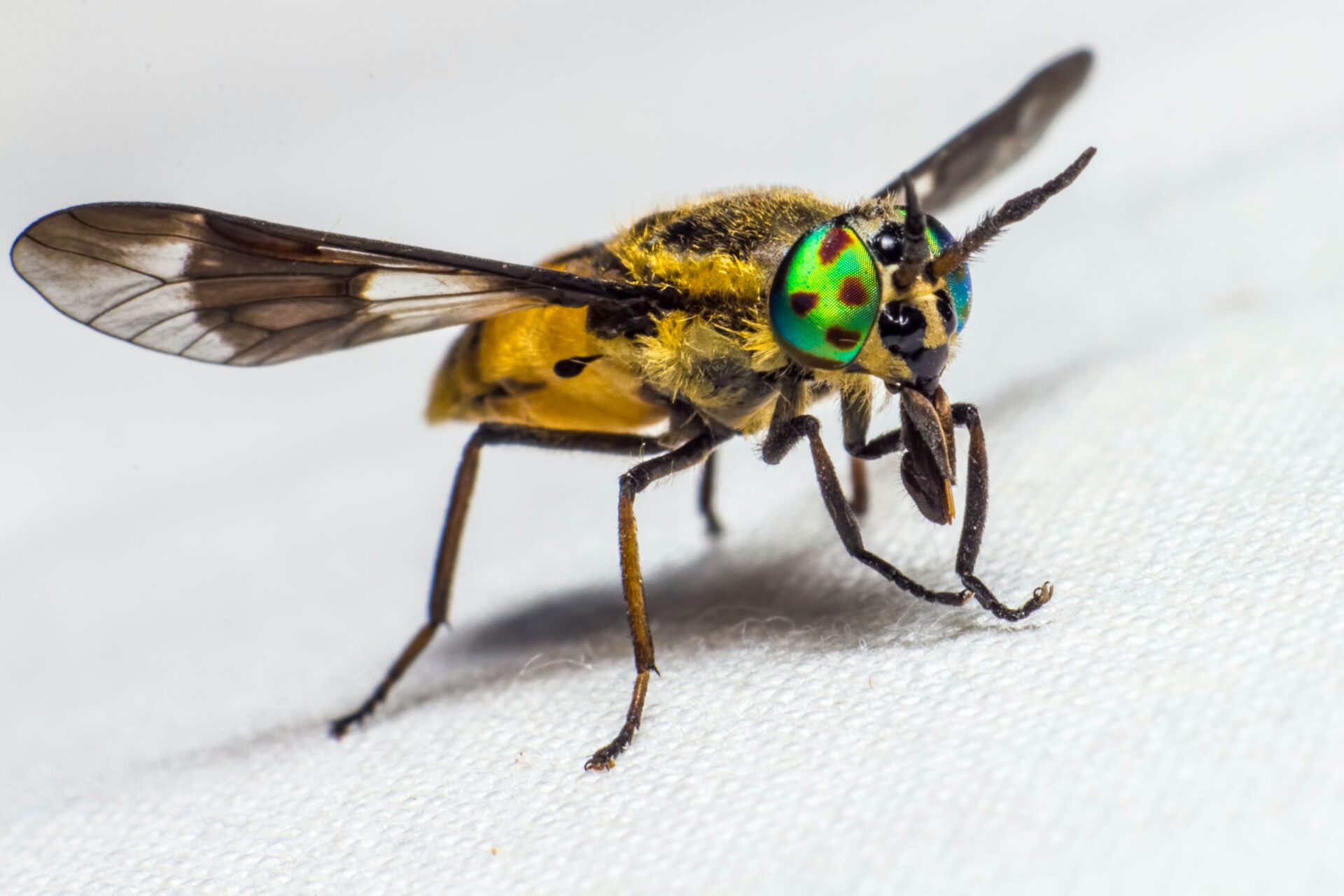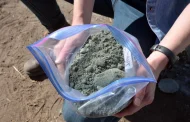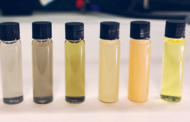
New research shows an insect’s ability to find food and a mate is reduced when their antennae are contaminated by particulate matter.
The impact of air pollution on insect health and reproduction is greater than previously understood and could be contributing to global declines in insect populations, including in remote wilderness areas, new research shows.
Researchers from the University of Melbourne, Beijing Forestry University, and the University of California Davis report that an insect’s ability to find food and a mate is reduced when their antennae are contaminated by particulate matter from industry, transport, bushfires, and other sources of air pollution.
University of Melbourne Professor Mark Elgar, who co-authored the paper published today in Nature Communications, said the study was alerting humans to a potentially significant risk to insect populations.
“While we know that particulate matter exposure can affect the health of organisms, including insects, our research shows that it also reduces insects’ crucial ability to detect odours for finding food and mates,” Professor Elgar said.
“This could result in declining populations, including after bushfires and in habitats far from the pollution source.
“As well as being fascinating creatures, many insects play a critical role in pollinating plants – including almost all the crops we rely on for food – and breaking down decaying material and recycling nutrients.”
The research team conducted several related experiments:
- Using a scanning electron microscope, they found that as air pollution increases, more particulate material collects on the sensitive antennae of houseflies. This material comprises solid particles or liquid droplets suspended in air and can include toxic heavy metals and organic substances from coal, oil, petrol, or woodfires.
- They exposed houseflies for just 12 hours to varying levels of air pollution in Beijing and then placed the flies in a Y-shaped tube ‘maze’. Uncontaminated flies typically chose the arm of the Y-maze leading to a smell of food or sex pheromones, while contaminated flies selected an arm at random, with 50:50 probability.
Neural tests confirmed that antenna contamination significantly reduced the strength of odour-related electrical signals sent to the flies’ brains – it compromised their capacity to detect odours. - In addition, continuing research in bushfire-affected areas in rural Victoria has shown that the antennae of diverse insects, including bees, wasps, moths, and species of flies, are contaminated by smoke particles, even at considerable distances from the fire front.
Insect antennae have olfactory receptors that detect odour molecules emanating from a food source, a potential mate, or a good place to lay eggs. If an insect’s antennae are covered in particulate matter, a physical barrier is created that prevents contact between the smell receptors and air-borne odour molecules.
“When their antennae become clogged with pollution particles, insects struggle to smell food, a mate, or a place to lay their eggs, and it follows that their populations will decline,” Professor Elgar said.
“About 40 per cent of Earth’s landmass is exposed to particle air pollution concentrations above the World Health Organisation’s recommended annual average.
“Surprisingly, this includes many remote and comparatively pristine habitats and areas of ecological significance – because particulate material can be carried thousands of kilometres by air currents,” Professor Elgar said.
Original Article: Air pollution particles may be a cause of dramatic drop in global insect numbers
More from: University of Melbourne | Beijing Forestry University | University of California Davis
The Latest Updates from Bing News
Go deeper with Bing News on:
Insect populations
- FILM SCENE | OPINION: Bugging out with 1950s gigantic insect movies
Giant, man-eating cicadas will emerge from their underground catacombs to create an insect infestation the likes of which has never been seen. I might be acting a tad hyperbolic, as they are neither ...
- 8 Dazzling Photos That Peek Inside The World Of Nocturnal Insects
If you’ve ever noticed the buzz, chirps and rustles intensifying around your campsite at dusk, you’re onto something. But the real story behind insect activity is more nuanced than you might think.
- The Netherlands Is Losing Its Insect-Pollinated Flowers
A wide range of plant species rely on insects for pollination, but the diversity of these insect-pollinated plants have decreased dramatically in recent decades ...
- Kent Wildlife Trust and Bugs Matter survey reveals ‘unsustainable’ decline in flying insects
Flying insect numbers in Kent are declining at an unsustainable rate, fear wildlife experts behind the latest survey into the health of our ecosystem.
- 'Bug splat' survey records 'staggering' drop in number of insects squashed on cars
Drivers taking part in the Kent Wildlife Trust and Buglife survey were asked to count the insects squashed on their vehicles - with the results described as "extremely concerning".
Go deeper with Bing News on:
Insect health and reproduction
- Mosquito season is upon us. So why are Southern California officials releasing more of them?
Vector control officials in Southern California are starting to release sterilized male mosquitoes to combat the summertime onslaught of ankle biters.
- 10 times as much of toxic pesticide could end up on your tomatoes and celery under new EPA proposal
Against the guidance of scientists, the EPA is relying on industry-backed tests to relax regulations on acephate ...
- Cicada-geddon: the fungus that controls insects like 'zombies'
In an event dubbed by one expert as "cicada-geddon", the mass of bugs will emerge across several US states. Some of them will be "zombie cicadas" that are infected by the sexually transmitted fungus, ...
- 8 Dazzling Photos That Peek Inside The World Of Nocturnal Insects
If you’ve ever noticed the buzz, chirps and rustles intensifying around your campsite at dusk, you’re onto something. But the real story behind insect activity is more nuanced than you might think.
- Riley County Health Department held its Bug-A-Poolza offering education on insects
MANHATTAN, Kan. (WIBW) - The Riley County Health Department provided the community with insight on how to protect yourself come the summer months. The Bug-A-Poolza was held at the K-State Gardens ...







